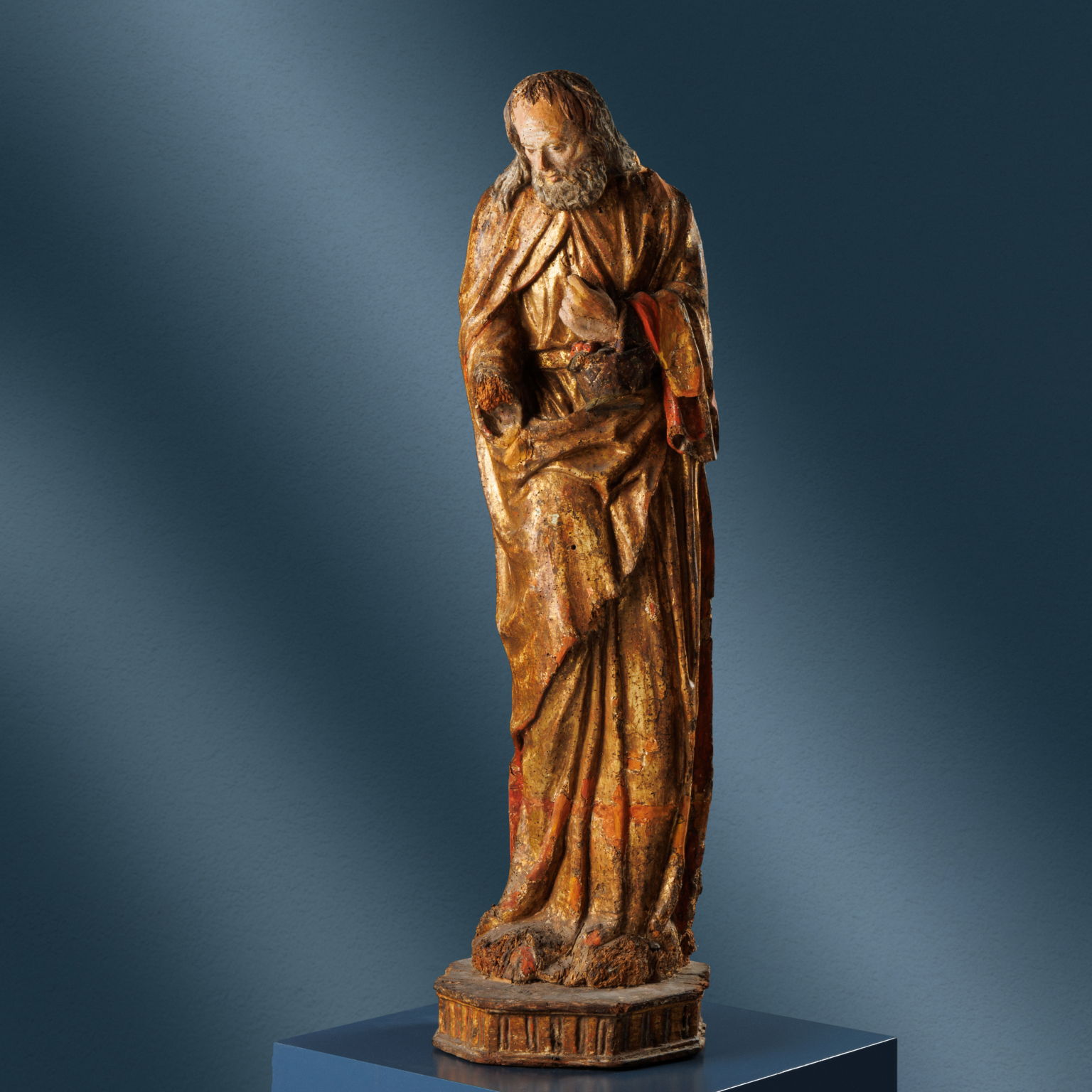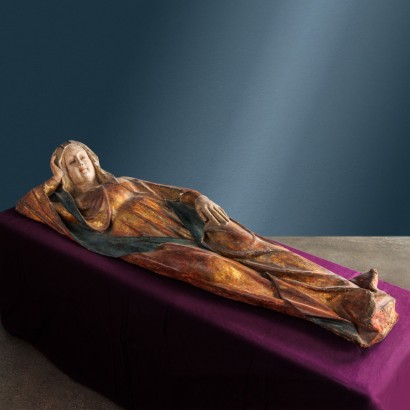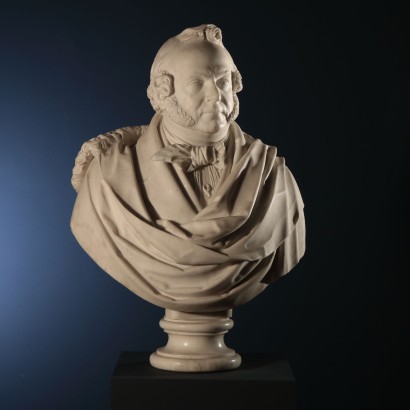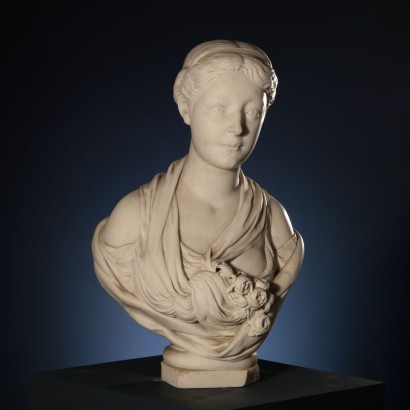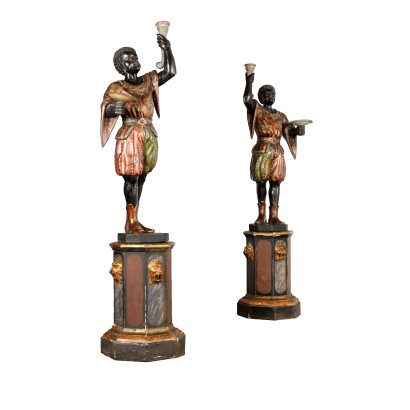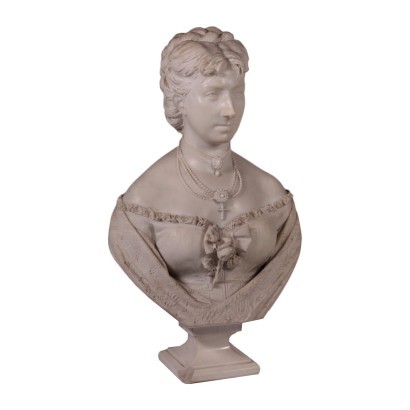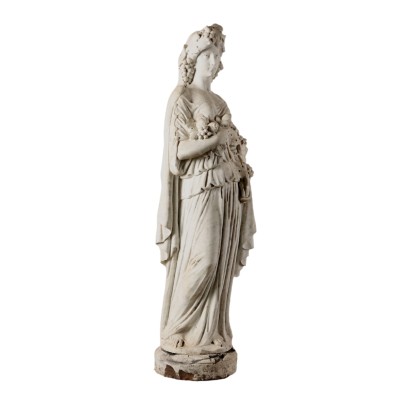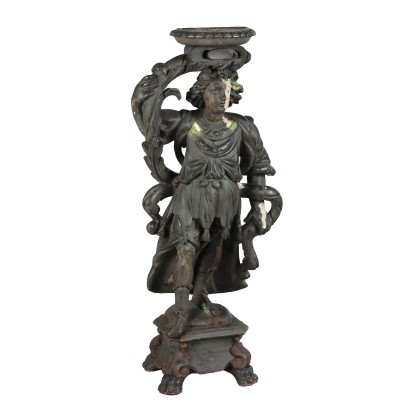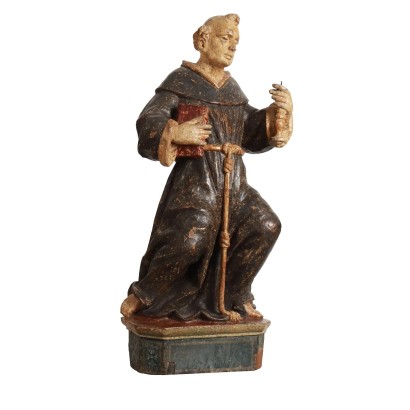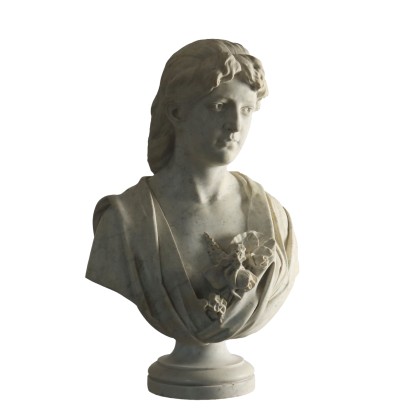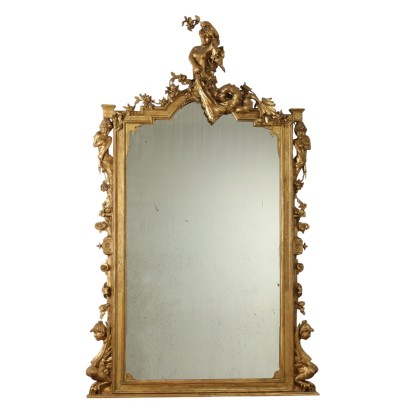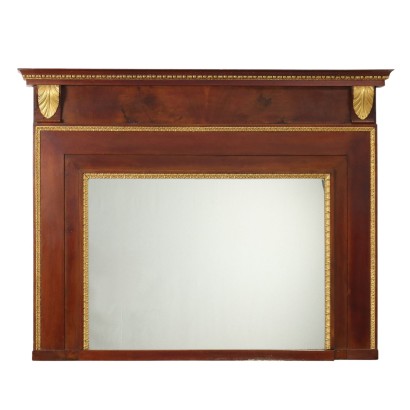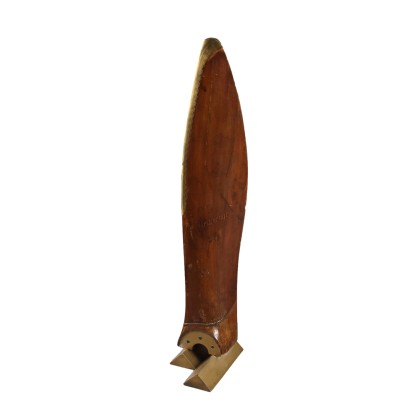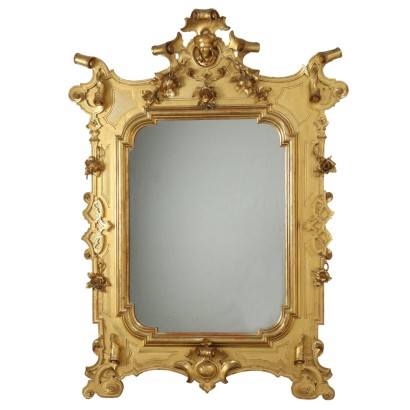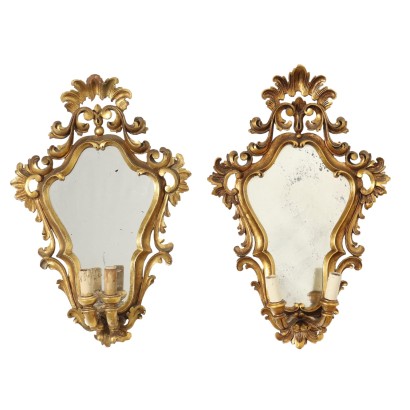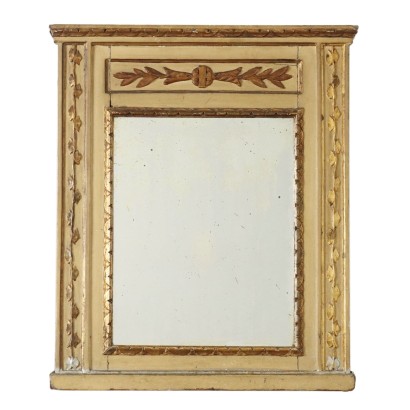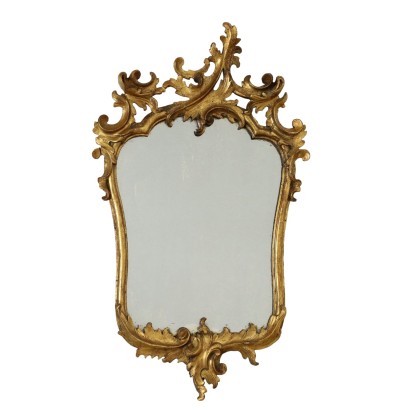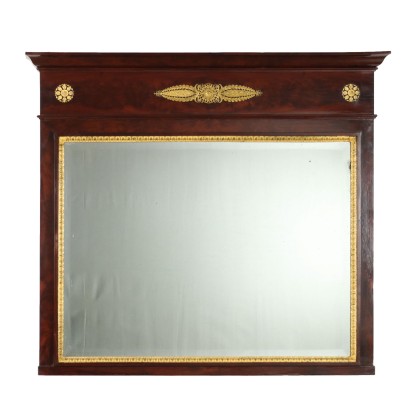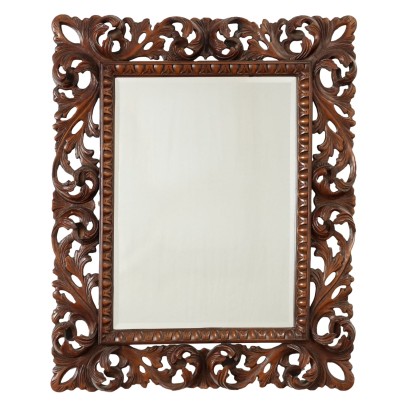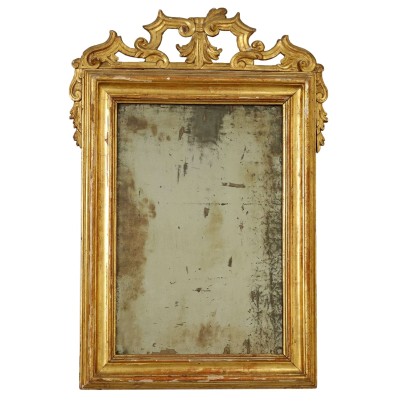San Gerardo dei Dyers - Lombard carver, late 15th century
Features
Lombard carver, late 15th century
Origin: Lombardia, Italy
Description
Sculpture depicting Saint Gerard standing, with a slight Anchement, on a hexagonal base; the head is slightly tilted downwards and has long hair and a thick, slightly graying beard, indicating advanced age. The saint is dressed in a long tunic tightened at the waist by a belt, while a long cloak rests on his shoulders; in his left hand he holds a wicker basket full of cherries. It presents shortcomings in the polychrome painting and in the ancient gilding; mutilated right hand.
Product Condition:
Product in good condition, has small signs of wear. We try to present the real state as fully as possible with photos. If some details are not clear from the photos, what is stated in the description applies.
Artwork dimensions (cm):
Height: 100
Width: 29
Depth: 23
Additional Information
Notes historical bibliographic
Studied by Giuseppe Sava, the sculpture constitutes an important historical testimony, being the oldest known plastic attestation of San Gerardo dei Tintori; co-protector together with Saint John the Baptist of the city of Monza. The saint is recognizable thanks to the attribute of the basket of cherries, in reference to a miraculous episode he performed. According to his hagiography, Saint Gerard used to spend a lot of time in prayer at the cathedral of Monza, so much so that one evening in December, he asked the custodians to let him pray all night. He promised them a basket of cherries and, given the harsh winter season, the event was seen as supernatural and for this reason it became part of the saint's typical iconography. Even the cloak with which he is presented refers to the miracle of the cloak lying on the water: Gerardo in fact sailed through the waters of the flooded Lambro river, managing with faith to save the hospital he himself founded from the disastrous flood. The iconography is typical of the saint and can be found in the known pictorial representations, among which the most famous is certainly the fresco by Bernardino Luini in the Monza cathedral. Here too the figure of the dyer (from the work of the family of origin) is depicted with a cloak, a twig of cherries and a stick clutched in his hand; this last element must also have been present in our sculpture, as attested by the through hole in the hand. From a stylistic point of view, the wooden statue in question still shows the adoption of a Gothic phrasebook, revealed by its slender proportions and curved posture, but on the other hand it already shows a confidence towards models which, at the end of the fifteenth century, were spreading throughout the Lombardy and Milanese areas. In particular, a suggestion derived from the older works of Giacomo del Maino and the workshop of Giovan Pietro and Ambrogio De Donati can be recognised. In the rear part it has a metal plate equipped with a hook, allowing us to hypothesize its original placement inside a niche or an ancona.Other customers have searched:
Se sei un appassionato d'arte, non perderti i nostri approfondimenti sul Blog Arte Di Mano in Mano e su FineArt by Di Mano in Mano - Arte:
Leggi di più
Ecco alcuni tra i principali articoli:Vedute
Falsi nell'arte antica
Un messaggio di fiducia per ripartire
La potenza espressiva dell'arte figurativa etiope
Breve Storia del Collezionismo
Giorgio Upiglio, maestro dei libri d'artista
Matthias Withoos detto "Calzetta bianca"
San Rocco pensaci tu - Classic Monday
Dai un'occhiata alle nostre rubriche di divulgazione sull'arte:
Epoche
Lavorazioni e tecniche
Mostre ed Eventi
Protagonisti
Sapevi che l'arte può essere anche un ottimo investimento (e non solo per grandi portafogli)?
L'Arte tra Collezionismo e Investimento
FineArt: Arte come investimento
Se sei interessato alle sculture antiche, sicuramente apprezzerai le presentazioni di FineArt:
Allegoria della Sapienza, Seguace di Giacomo Bertesi, Inizio del XVIII secolo
Busto del Barone Antonio Negri, Gaetano Monti, 1837
Busto in Biscuit, Francesco I D'Asburgo, Vienna, 1812
Busto in marmo Primavera, prima metà XIX secolo
Busto in terracotta, Ritratto Virile, Nord Italia, primo quarto XIX secolo, Impero
Coppia di angeli, Carlo Francesco Mellone (e aiuti) Milano, 1730 ca
Coppia di Fanciulli, Francia 1820 ca.
Coppia di Figure reggi vaso, ambito di Fratelli Groppelli, inizio XVIII secolo
Coppia di Satiri, Roma inizi XVIII Secolo
Madonna del cardellino, Francia, fine XVI secolo
San Crispino o San Crispiniano, Tirolo, metà XVIII secolo
Product availability
The product can be seen at Cambiago
Immediate availability
Ready for delivery within 2 working days from ordering the product.

